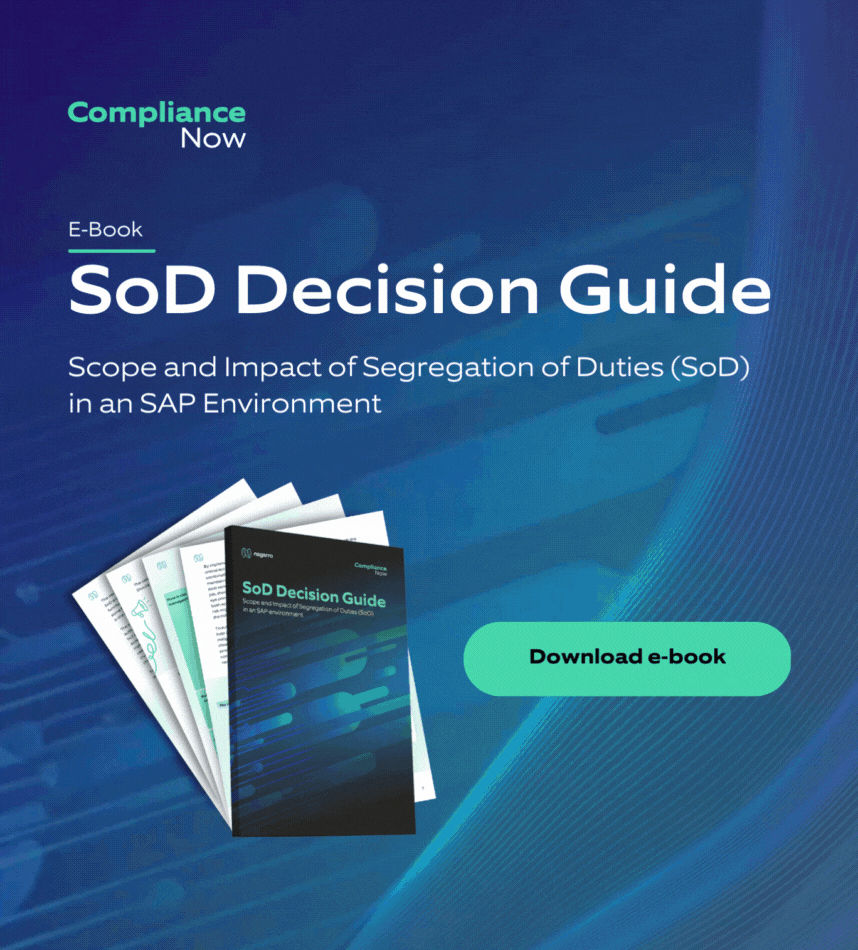Internal and external regulations are growing continuously
Many companies and organizations are experiencing increasing digitalization and complexity of their processes. Internal and external regulations are growing continuously, requiring companies to constantly be up to date with their internal control processes.
While it is difficult to top the major corporate scandals of the 00´s, the past decade still had a number of high-profile scandals that left their severe marks on corporate governance. We would have thought that heavy regulations such as the Sarbanes-Oxley Act could severely decrease the number of high-level corporate governance scandals, especially with a general strengthening of corporate governance rules and increasing accountability and transparency by organizations and their key stakeholders. Yet, it is safe to say that it has not been the case.
Major scandals such as the CumEx-Files and the Diesel Emission scandal have shown us that we still have a long way to go before we can perfectionize our internal control and corporate governance processes. While corporate organizations are spending a vast amount of resources in order to improve their governance standards and minimizing their risks, it is still very likely that the new decade will bring to light new major scandals that will drive more government regulation of governance and internal control standards.
Can an effective internal control system minimize corporate governance risks?
The short and clear answer is; yes, it can.
An effective control system helps to minimize a broad variety of risks that every company and organization is facing. All risks should be taken seriously, no matter the severity and likelihood of the specific risk. Having an effective control system in place could help your organization with the following points:
- Protect your company’s physical and financial assets from fraud, theft, and errors, as well as quickly are able to identify fraud and errors if they should happen to occur.
- Spread out the controls to various key employees in the company, making sure that a well-documented and transparent flow of processes is always in place.
- Have a Segregation of Duties system in place, preventing a single individual from having access to multiple critical functions that can be misused. This could for example be to prevent a single individual to create a fictive bank account and post a customer payment on it.

- Maintain the validity of financial data, helping owners and managers to make informed decisions based on accurate financial information.
- Maintaining compliance within the whole organization by always having well-documented and transparent internal controls in place.
- Make your operations more efficient and effective with processes and procedures by automating manual time-consuming and error-prone controls.
- Monitor the internal control system in a simple way, with mitigated tasks and documented controls.
- Save time, resources and costs spent on external audits.
How can ComplianceNow help you to create a more effective Internal Control system?
In our many touchpoints with companies around compliance, we experienced that companies, in general, have the ambition to strengthen their efforts in risk management through implementing internal controls. Some companies have documented a sub-set of controls and execute these through a manual process. This is a good start but when addressing the actual operation of internal controls, there is less room for optimism.
The efforts related to documenting, distributing, and approving controls often appear inappropriate and time-consuming. Secondly, how do we get started – do we need to create our control base ourselves? With these observations in mind, it was obvious to extend ComplianceNow to deliver a platform supporting companies in accelerating the process of internal controls.
This is how our newest tool Internal Control was born. Internal Control consists of a control framework including a control library to get the companies started, a workflow to deal with the distribution and approval part, and, finally, a control archive and dashboard to gather documentation, thus allowing auditors and management one-stop reviewing.
Internal Control is designed to make the process of your internal controls focused, documented, responsive and effective. Being an SAP-Integrated framework, it supports the documentation and execution of your company’s controls. These are both controls related to your SAP processes as well as controls relevant to other applications or even non-IT controls could be included in the scope.
Follow us on LinkedIn and get instant access to our newest articles and posts about SAP and Compliance.

Interested to learn more….?
We always look forward presenting Internal Control to present customers, possible new customers, partners and network. So, if you want to learn more, have questions or would like to see a live demo of CN Internal Control please contact us.


